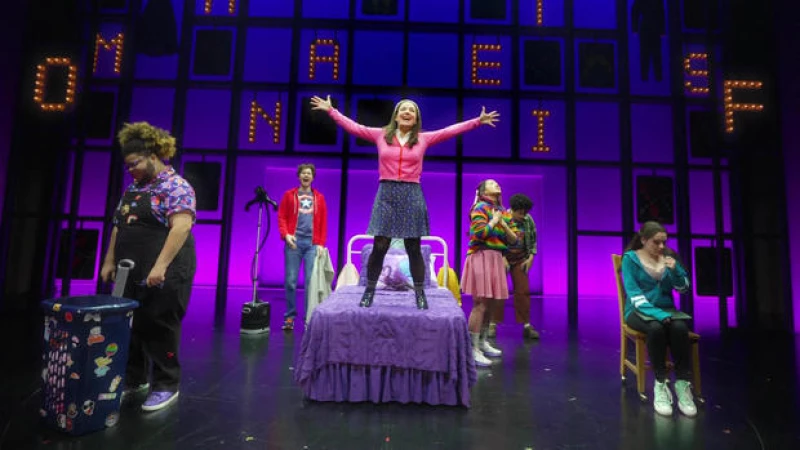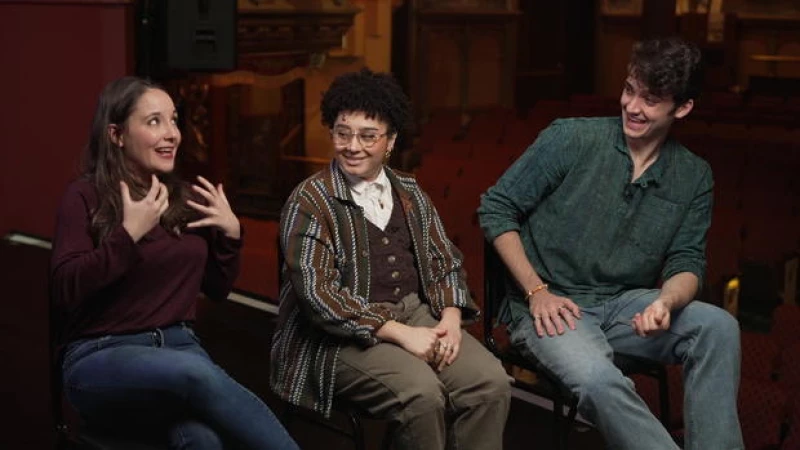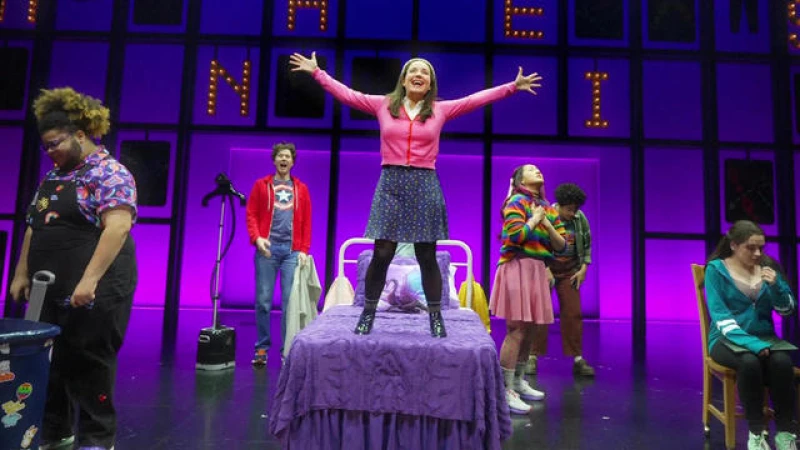Broadway Musical Highlights Autism Representation
Clinical psychologist Emilio Amigo, who runs a counseling center for autistic people in Columbus, Ohio, had a big idea: "Many of my clients never went to their homecoming or prom because they weren't welcomed," he said. "I'm like, 'How many of you guys would love to go to a big formal?'"
Putting on a prom involved teaching his clients new skills, like dancing or asking someone out. Their journey was the subject of a 2015 documentary called "How to Dance in Ohio."
That story is now a Broadway musical.

"All of us who work on the show get messages from autistic individuals saying, 'I've seen myself represented onstage.' That's what we do it for," said Sammi Cannold, the show's director. She was not, however, its first one. That was the legendary Hal Prince, director of shows like "Phantom of the Opera," "Evita," "Cabaret," and many Sondheim musicals. He sadly passed away in 2019.
"Hal's granddaughter is autistic; my brother is autistic," said Cannold. "For him the show was very personal; for me the show is very personal."
But "How to Dance in Ohio" isn't just about individuals with autism. All of the characters on the spectrum are portrayed by actors who are also on the spectrum.
Cannold mentioned that she received feedback from people suggesting that it would be difficult to find actors with autism who have the talent for Broadway. However, she stated, "We could've cast the show three times over."
Ashley Wool, Imani Russell, and Liam Pearce are among the autistic actors in the production. Pearce expressed, "I believe you have chosen the perfect three individuals, as each of us is so unique."
Pearce received his diagnosis at the age of five, while Wool was in her junior year of college. Russell, on the other hand, was diagnosed in May 2021 and shared, "I was genuinely thrilled because I finally had a term for something I had always felt internally but couldn't articulate."
Autism encompasses a wide range of characteristics and abilities, which is why it is described as a spectrum.
Amigo explained, "Social anxiety and general anxiety are the greatest challenges for individuals with autism. This stems from not knowing what to anticipate, how to behave, or what to say."
People who are more sensitive to various stimuli, such as lights or sounds, have shared their experiences.
One individual highlighted the concept of masking, which involves suppressing certain behaviors or expressions to conform to societal norms. This includes hiding movements, sounds, and even speaking when it is not desired, solely to make others feel comfortable.
During the production, the actors were encouraged to incorporate their own personal experiences of autism into their characters. The director, Sammi Cannold, supported the cast's need to express their energy and excitement in their own unique ways.
The rehearsal process also included accommodations for the cast and crew. For instance, if someone had a sensitivity to scented soap, all scented soap in the building would be replaced with unscented soap.
Additionally, the show provided special areas for autistic audience members with sensory sensitivities. These areas offered cool-down spaces, sunglasses, and headphones.
Furthermore, the show carries a message for non-autistic audience members.
Do I only exist on this planet
to make somebody else feel inspired?
–"Nothing at All," from "How to Dance In Ohio"
One of the cast members of "How to Dance in Ohio" expressed their thoughts on the audience's perception of the show. They mentioned that while the characters in the show explicitly state that they don't want to be objects of pity or inspiration, the audience still finds their success inspiring. This raises the question of whether the audience's feeling of inspiration is actually infantilization. The cast member emphasized that it's not their disabilities that are the hurdles, but rather other people's expectations for them.
The show has gained a large following and has received enthusiastic responses from audiences. One cast member shared a memorable experience during the first preview, where they received a standing ovation before even performing. They were surprised by the immediate recognition and support from the audience. Another cast member mentioned that young kids who are autistic have approached them after the show, expressing their own connection to the story.
But some of the biggest fans are the real people from the documentary. Sammi Cannold introduced them on opening night, including the real-life Drew – Pearce's character. "It was a really crazy, awesome, surreal experience to be able to, like, look at him and be like, 'Hey, thank you for existing, because my entire life and what I do here every night, is because of you.'
Dr. Amigo liked it, too. He said he's seen it "a few times. if I'm counting right, it's about 13."
Do the show and the documentary help his clients in any way? "Every day," he said. "Because it's a story about them. It builds our self-esteem. It builds our sense of significance."
When cast members were asked how they hope their show will be perceived in the future, Russell said, "Oh, 'How to Dance in Ohio,' that was one of the beginnings."
"A turning point," said Wool.
Amigo said, "I hope that in ten years, it's no longer a big deal that there are seven autistic actors in a cast. Like, 'Okay. So what? That's great. Let's go. Let's start working on a play!'"

For more Info:
- "How to Dance in Ohio" is at the Belasco Theatre, New York City
- The documentary "How to Dance in Ohio" is currently streaming on Max
- Dr. Emilio Amigo, Amigo Family Counseling, Columbus
Story produced by Wonbo Woo. Editor: Steven Tyler.







